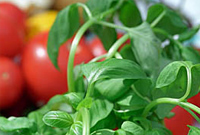CDSR:抗氧化剂或可增强男性生育能力
生物谷新西兰研究人员发现,男性服用维生素E和锌等抗氧化剂或许能增强生育能力。
提观点
新西兰奥克兰大学研究人员把研究对象锁定为生育能力低的男性,即生育能力低于平均水平但仍能生育。
统计结果显示,每20名男性中会有一人承受低生育能力困扰,夫妇晚育一半源于男性生育能力低。医学专家认为,男性生育能力低80%是因为精子受到氧化,数量减少,质量降低。
精子氧化由一种名为自由基的分子引发。自由基是细胞新陈代谢产物,具有强氧化性,可损伤机体组织和细胞功能。抗氧化剂含有某些维生素和营养成分,能够帮助细胞抵御自由基损伤。
一些学者设想,男性服用抗氧化剂或许能够帮助精子保持游动能力。研究人员回顾以往生殖研究,希望获得数据,支持这一观点。
溯研究
研究人员回顾34项生育治疗研究,涉及近3000对夫妇。治疗方法包括体外受精和宫腔内人工受精,即两种针对男性精子质量低所致不孕症的最常用方法。
分析15项研究中96个成功受孕案例,研究人员发现,男性服用抗氧化剂后,生育能力增强4倍多,配偶分娩活胎的可能性增加5倍。
研究项目主管玛丽安·肖维尔说:“口服抗氧化剂可能在一定程度上提高夫妻受孕几率。”
研究报告由网上医学电子杂志《科克伦图书馆》 The Cochrane Library 发表。不过,研究人员认为,抗氧化剂增强男性生育能力的观点并非绝对正确,有待更多研究结果加以确认。
遭质疑
这项研究遭到一些生育专家质疑。美国伊利诺伊大学泌尿学教授劳伦斯·罗斯说:“男性精子功能存在障碍,不查明原因而单纯借助抗氧化剂施行治疗不合适。”
另一些专家质疑研究方法和研究对象数量。研究人员回顾的34项研究中,没有一项研究的参与人数超过1000人,一些研究仅10人参与。
美国布朗大学教授马克·西格曼说:“研究表明,抗氧化剂能够提高婴儿安全出生可能性,这一结论仅以20个案例为依据,样本数量相对较少。”他认定,研究涉及的抗氧化剂种类和数量不同,无法确定每一种抗氧化剂的效用。
“一种治疗方法对多数夫妻有效的想法不现实,”西格曼说,“虽然没有证据表明抗氧化剂有害人体健康,但我们不清楚哪一种抗氧化剂或者多少剂量能够增强生育能力,没有一种抗氧化剂获得(美国)食品和药物管理局批准用于不孕不育症治疗,消费者不应该偏听偏信。”(生物谷Bioon.com)
生物谷推荐原文出处:
Cochrane Database of Systematic Reviews 2011, Issue 1. Art. No.: CD007411. DOI: 10.1002/14651858.CD007411.pub2.
Antioxidants for male subfertility
Marian G Showell1, Julie Brown1, Anusch Yazdani2, Marcin T Stankiewicz3, Roger J Hart4
1Obstetrics and Gynaecology, University of Auckland, Auckland, New Zealand. 2Clinical Research and Development, Queensland Fertility Group, Woolloongabba, Australia. 3Reproductive Medicine, Flinders Reproductive Medicine, Bedford Park, Australia. 4School of Women's and Infants Health, The University of Western Australia, King Edward Memorial Hospital and Fertility Specialists of Western Australia, Subiaco, Australia
Abstract
Background
Between 30% to 80% of male subfertility cases are considered to be due to the damaging effects of oxidative stress on sperm. Oral supplementation with antioxidants may improve sperm quality by reducing oxidative stress.
Objectives
This Cochrane review aimed to evaluate the effect of oral supplementation with antioxidants for male partners of couples undergoing assisted reproduction techniques (ART).
Search strategy
We searched the Cochrane Menstrual Disorders and Subfertility Group Register, CENTRAL (The Cochrane Library), MEDLINE, EMBASE, CINAHL, PsycINFO and AMED databases (from their inception until Febuary 2010), trial registers, sources of unpublished literature, reference lists and we asked experts in the field.
Selection criteria
We included randomised controlled trials comparing any type or dose of antioxidant supplement (single or combined) taken by the male partner of a couple seeking fertility assistance with placebo, no treatment or another antioxidant. The outcomes were live birth, pregnancy, miscarriage, stillbirth, sperm DNA damage, sperm motility, sperm concentration and adverse effects.
Data collection and analysis
Two review authors independently assessed studies for inclusion and trial quality, and extracted data.
Main results
We included 34 trials with 2876 couples in total.
Live birth: three trials reported live birth. Men taking oral antioxidants had an associated statistically significant increase in live birth rate (pooled odds ratio (OR) 4.85, 95% CI 1.92 to 12.24; P = 0.0008, I2 = 0%) when compared with the men taking the control. This result was based on 20 live births from a total of 214 couples in only three studies.
Pregnancy rate: there were 96 pregnancies in 15 trials including 964 couples. Antioxidant use was associated with a statistically significant increased pregnancy rate compared to control (pooled OR 4.18, 95% CI 2.65 to 6.59; P < 0.00001, I2 = 0%).
Side effects: no studies reported evidence of harmful side effects of the antioxidant therapy used.
Authors' conclusions
The evidence suggests that antioxidant supplementation in subfertile males may improve the outcomes of live birth and pregnancy rate for subfertile couples undergoing ART cycles. Further head to head comparisons are necessary to identify the superiority of one antioxidant over another.


